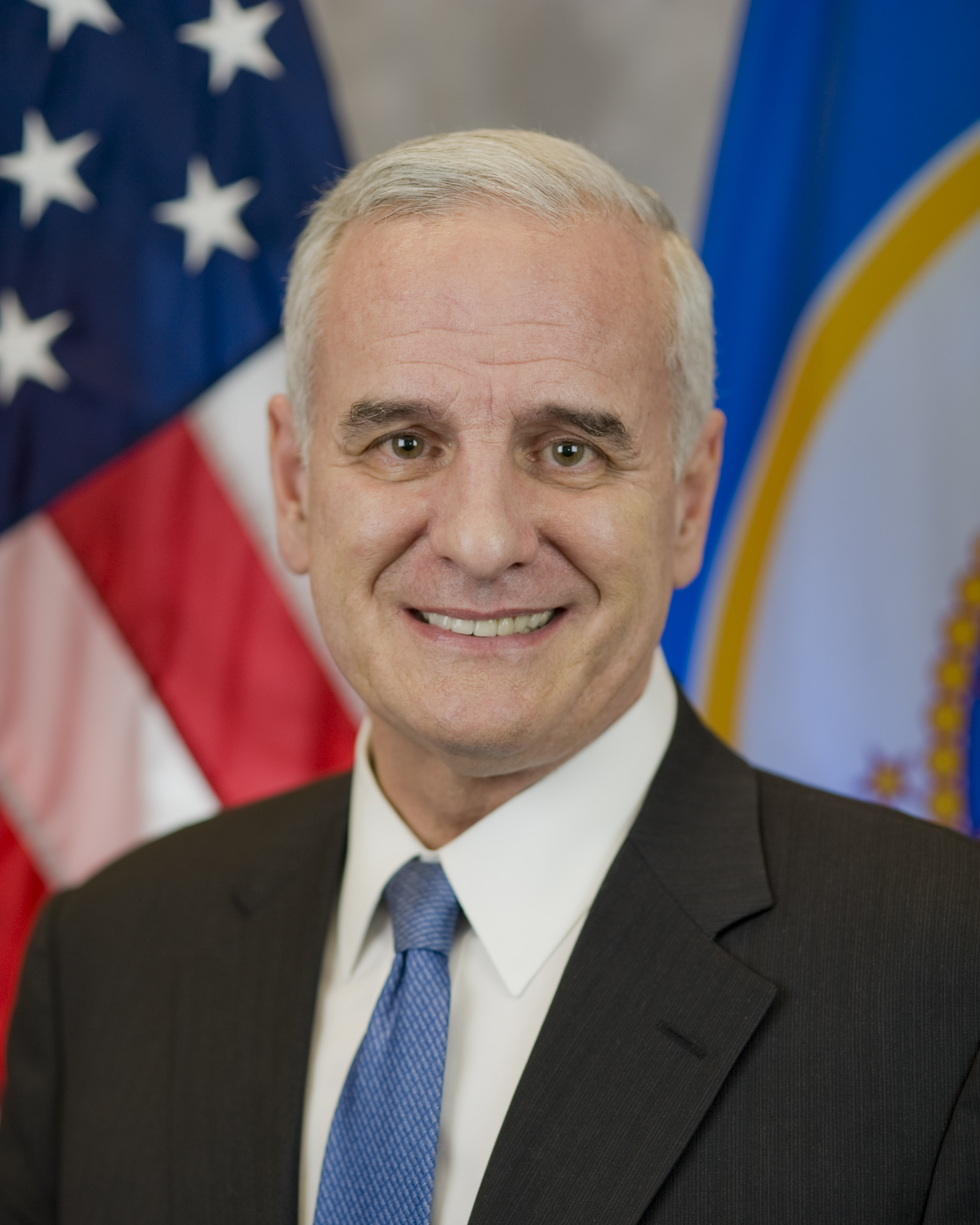Supplemental spending ideas proffered to health committee
On the same day Republican committee leaders were given their budget targets, the House Health and Human Services Finance Committee was given details of how the governor would increase spending on health care, such as $100 per month increases in cash payments to low-income families with children.
No action was taken, but Committee Chair Rep. Matt Dean (R-Dellwood) said Tuesday he looks forward to everyone’s input in the coming days as he prepares to assemble an omnibus health and human services finance bill.
“Ideas are good, needed and appreciated at this time,” Dean said.
 Gov. Mark Dayton
Gov. Mark DaytonThe governor’s supplemental budget includes a cash increase for Minnesota Family Investment Program enrollees. The grants are aimed at helping poor families provide for their children’s basic needs for up to 60 months. The extra $68.2 million in the 2016-17 biennium would come from a combination of the General Fund and the Temporary Assistance for Needy Families Fund. State assistance for low-income families has not increased since 1986.
Another proposal is intended to help people with disabilities plan for their long-term care by allowing them to put money into a savings account without the account balance affecting their public health care eligibility status. The Achieving a Better Life Experience, or ABLE, accounts would take an initial $105,000 investment, but moving forward the program would be fee-supported.
Additional funding also could delay the closing of state facilities that serve people with severe developmental and mental disabilities, allowing more time for private sector providers to prepare to care for the clients, according to Human Services Commissioner Lucinda Jesson. In addition, the Anoka Metro Regional Treatment Center would open 11 additional beds to serve patients with mental health conditions who are currently on a waiting list.
Other proposals in the governor’s supplemental budget include:
- monitoring systems for child maltreatment screenings;
- closing the state-operated Child and Adolescent Behavioral Health Services program in Willmar and replacing it with contracted services;
- restructuring the program rate for people in a chemical dependency treatment program;
- adding $2 million in funding for Homeless Youth Act services;
- increasing Safe Harbor services for sexually exploited youth;
- expanding county grants to educate women at risk of fetal alcohol spectrum disorder;
- establishing a pilot project for supportive housing for individuals with disabilities or mental illness;
- providing the employer’s share of health and dental insurance benefits to former state employees who were permanently disabled as a result of workplace assaults by clients being served;
- funding for ad hoc auditing of managed care organizations that provide Medical Assistance services and to MinnesotaCare enrollees; and
- establishing a task force to study the future options for MNsure, the state’s health care exchange.
Related Articles
Search Session Daily
Advanced Search OptionsPriority Dailies
Ways and Means Committee OKs proposed $512 million supplemental budget on party-line vote
By Mike Cook Meeting more needs or fiscal irresponsibility is one way to sum up the differences among the two parties on a supplemental spending package a year after a $72 billion state budg...
Meeting more needs or fiscal irresponsibility is one way to sum up the differences among the two parties on a supplemental spending package a year after a $72 billion state budg...
Minnesota’s projected budget surplus balloons to $3.7 billion, but fiscal pressure still looms
By Rob Hubbard Just as Minnesota has experienced a warmer winter than usual, so has the state’s budget outlook warmed over the past few months.
On Thursday, Minnesota Management and Budget...
Just as Minnesota has experienced a warmer winter than usual, so has the state’s budget outlook warmed over the past few months.
On Thursday, Minnesota Management and Budget...